Size Chart

Length unit:
Sizes may vary up to 1
HPSL: High Point Shoulder Length
BW: Bust Width (width of shirt measured 1" below armhole)
Couldn't load pickup availability
String theory is part of a quest to understand, and answer some very big questions. What are we made of? What is the machinery of the universe? What forces move and shape it? For many decades, physicists have been in pursuit of a Grand Unified Theory – a description of the way the universe works, from the large-scale movements of galaxies to the interactions of the subatomic particles that compose us. Our current picture is split, with conflicting models for the very large and the very small. Einstein’s General Relativity elegantly describes how gravity interacts with our four dimensions of space and time, but it can’t be combined with our so-called Standard Model of particle physics. The Standard Model contains a catalog of particles, like quarks and electrons that make up normal matter, and others that act as the messengers of three forces: electromagnetism, the “strong” force that holds the atomic nucleus together, and the “weak” force responsible for radioactivity. If we don’t know how all four forces fit together, then we must be missing something vital. This problem drove some theorists back to the drawing board to see if there may be a more fundamental way to view the universe. This was the beginning of string theory.
String theory is not simply one idea – not yet anyway. All of its versions share a few principles, though. The first is that the four dimensions of spacetime are less than half of the story. The equations of string theory describe a ten-dimensional universe. Within it are the strings, one-dimensional objects bound in loops so small we mistake them for point-like particles. In string theory, every kind of particle is the result of a different vibration, as though they were notes played on the strings of a ten-dimensional guitar. But what are these other dimensions? We can move in three directions, and we move forward in time, but how can there be others? This is where theories differ. These dimensions may be very short, and curled back on themselves, so there’s hardly anywhere to go (only 10-35 meters!). Other theories include “branes” – structures of one to nine dimensions that float through the full ten-dimensional sea, and we happen to live in a brane with four.
Developing a model of the universe is one thing, but proving it is another. Experiments underway may test some of the predictions and provide real evidence. If all particles are strings, it is predicted that there are many modes of vibration that have not yet been seen. CERN, the laboratory that discovered the Higgs boson, continues to look for new particles that are predicted by string theory. Other experiments look for the faint signatures of weakly-interacting particles. As this search for evidence goes on, physicists continue to refine their models. The number of theories has been shrinking, as theorists realize that some of the versions of string theory were actually special cases of an all-encompassing view (they’re calling it M-theory). If true, this theory would provide an understanding of the universe at a fundamental level. Until then, the quest continues.
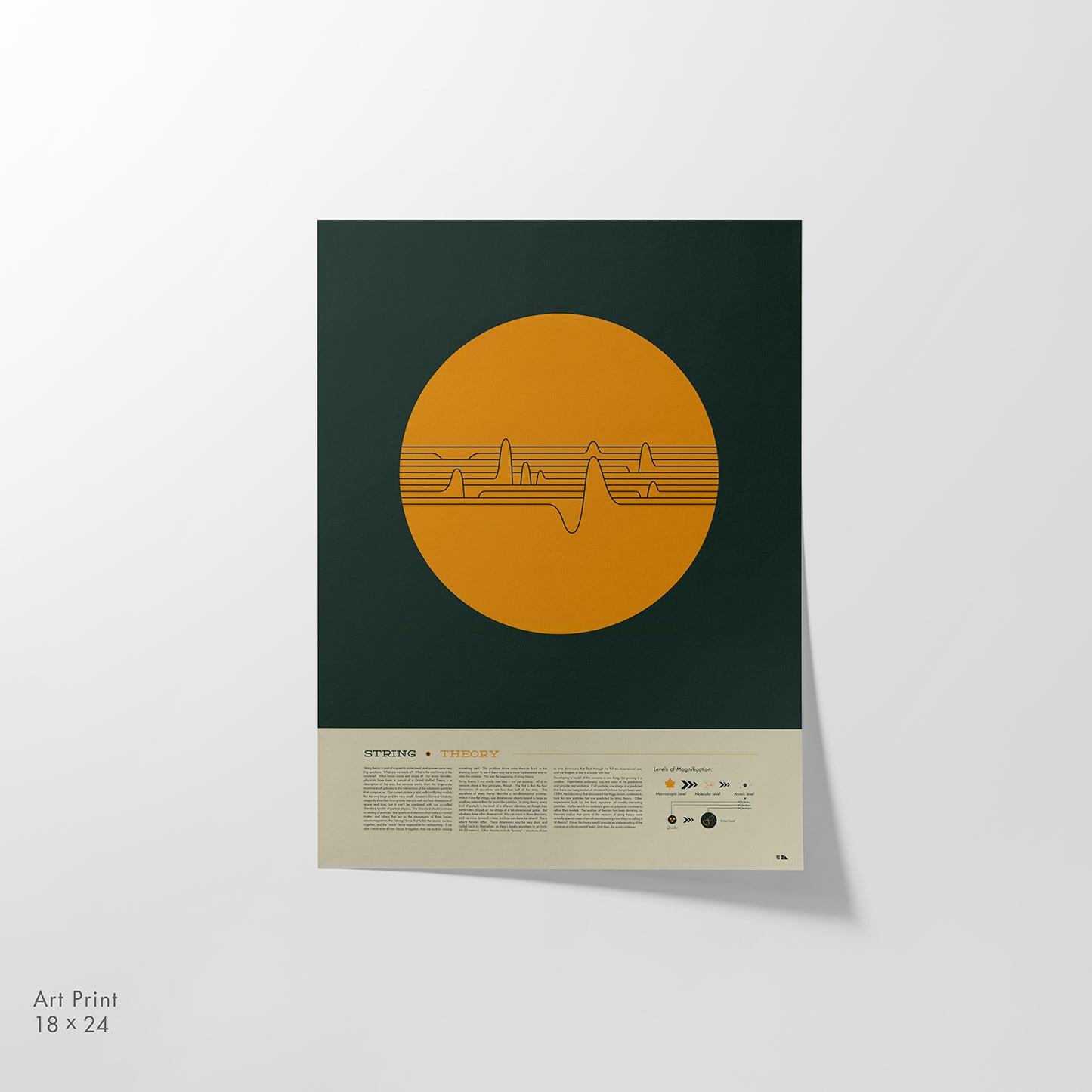
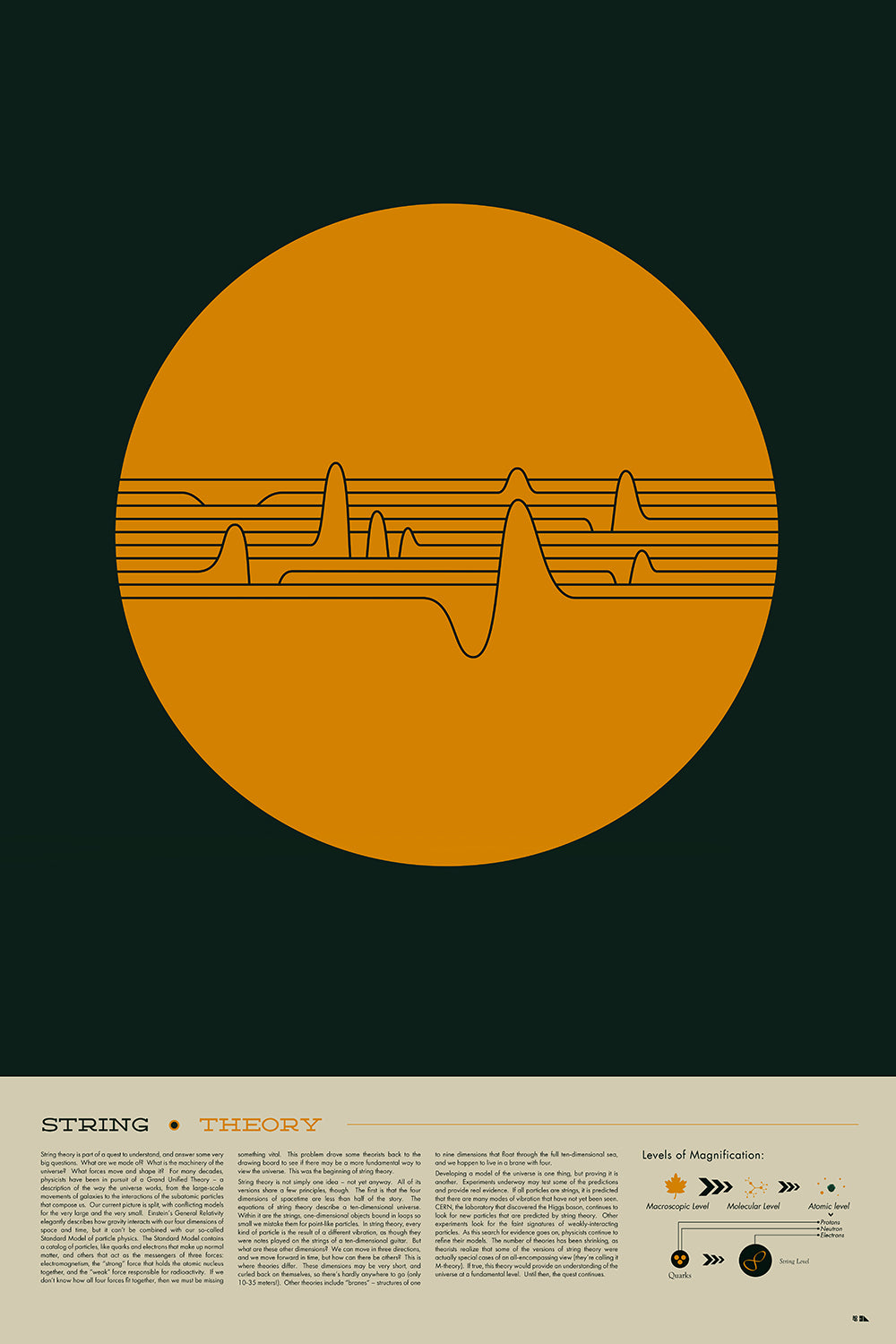
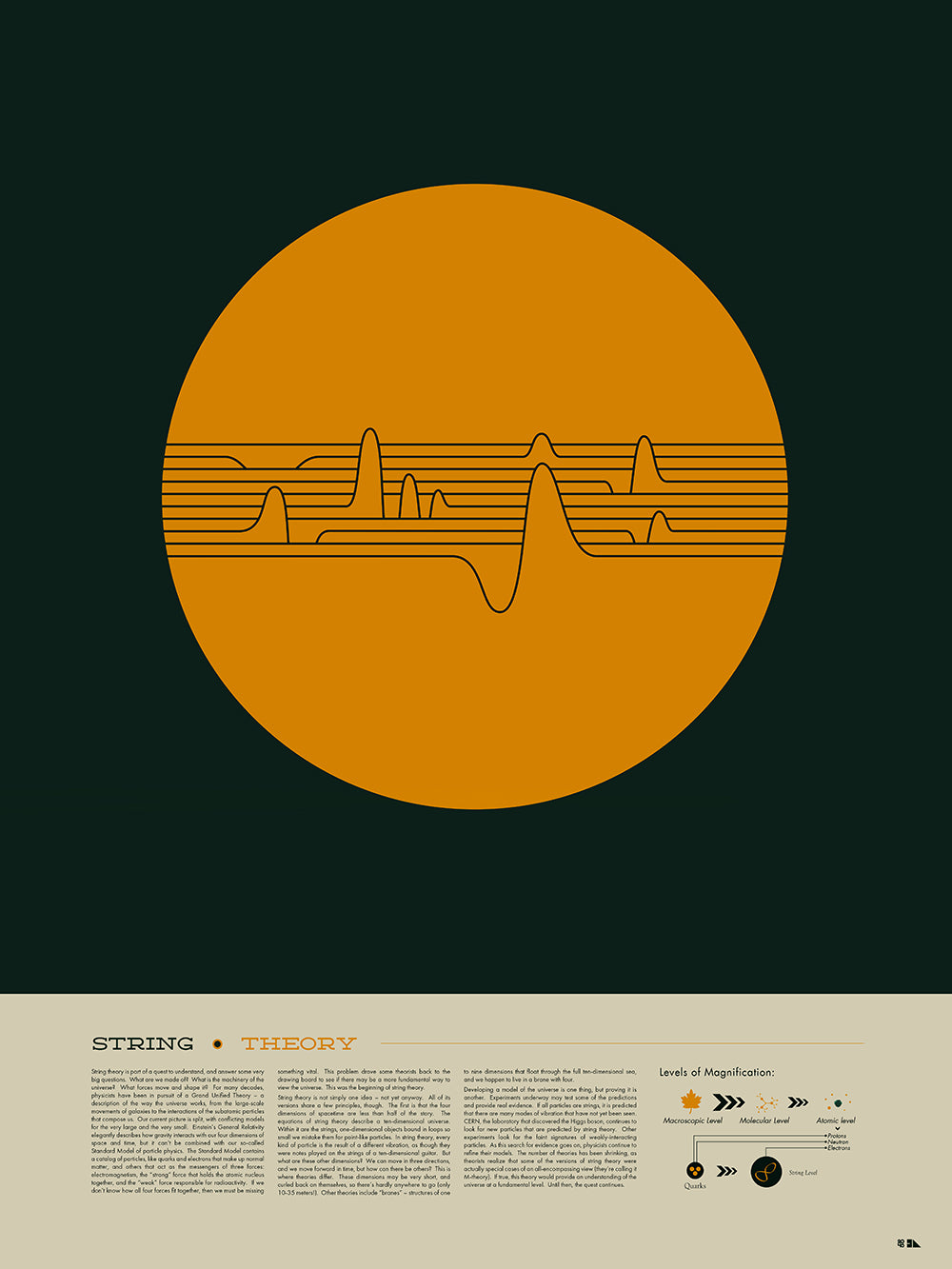
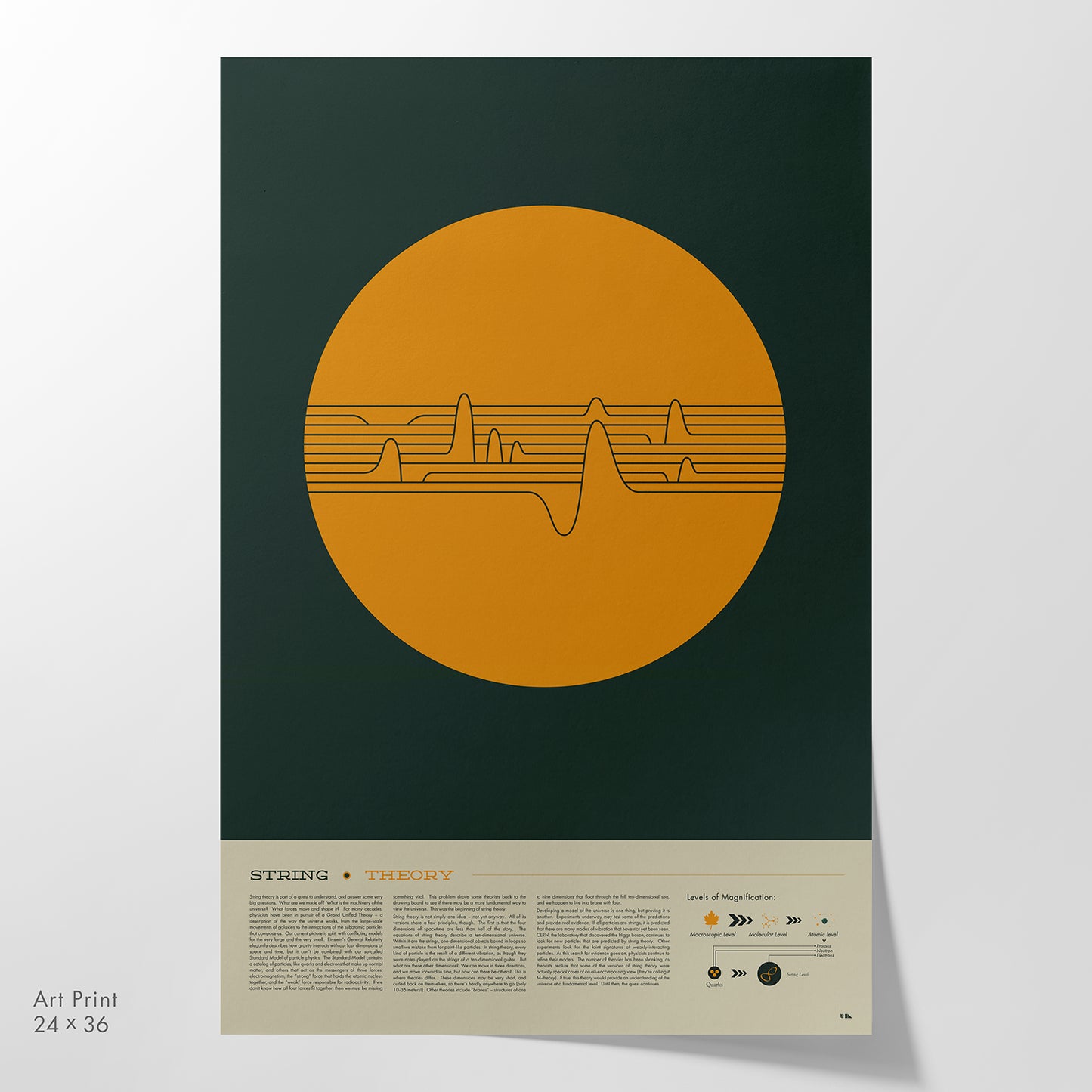
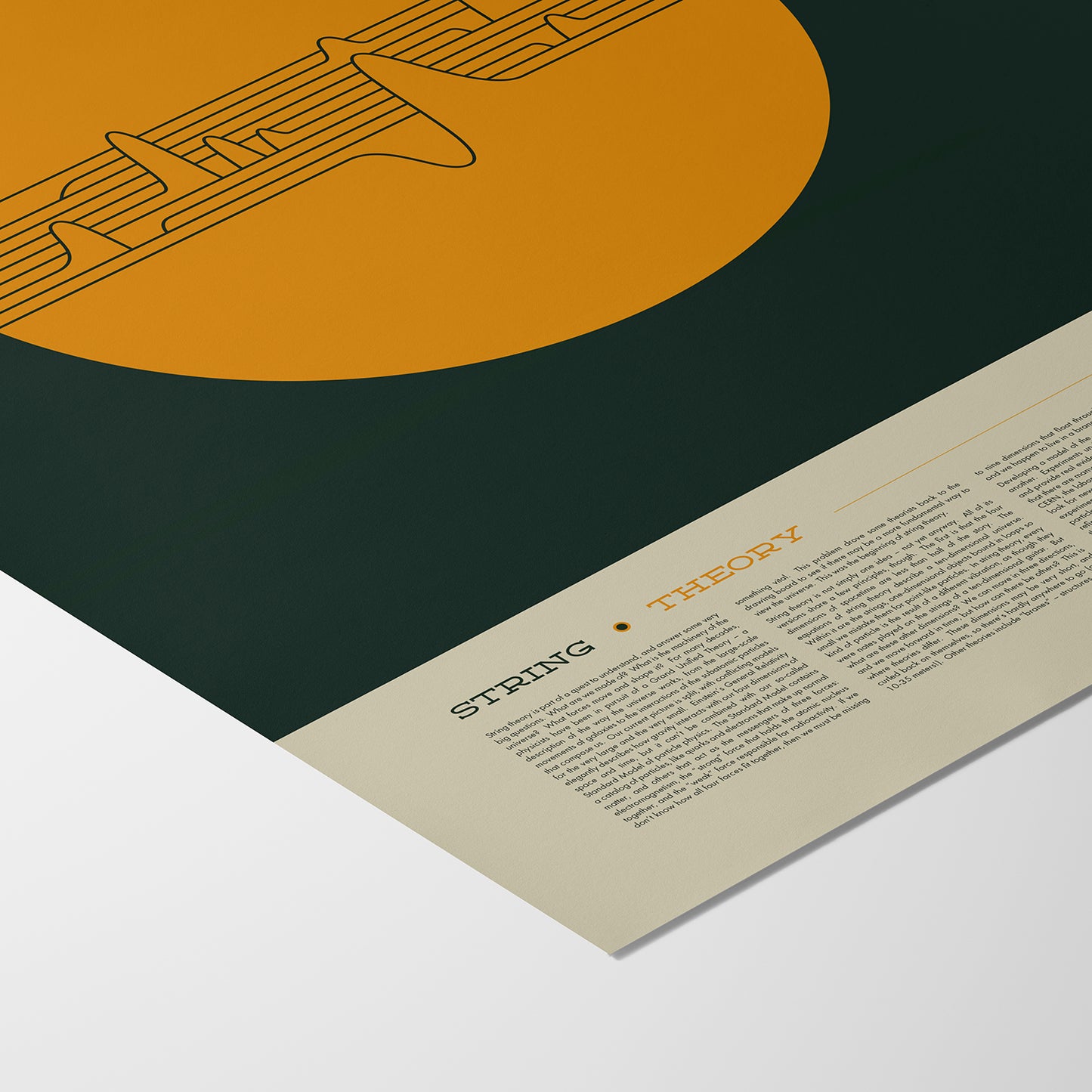

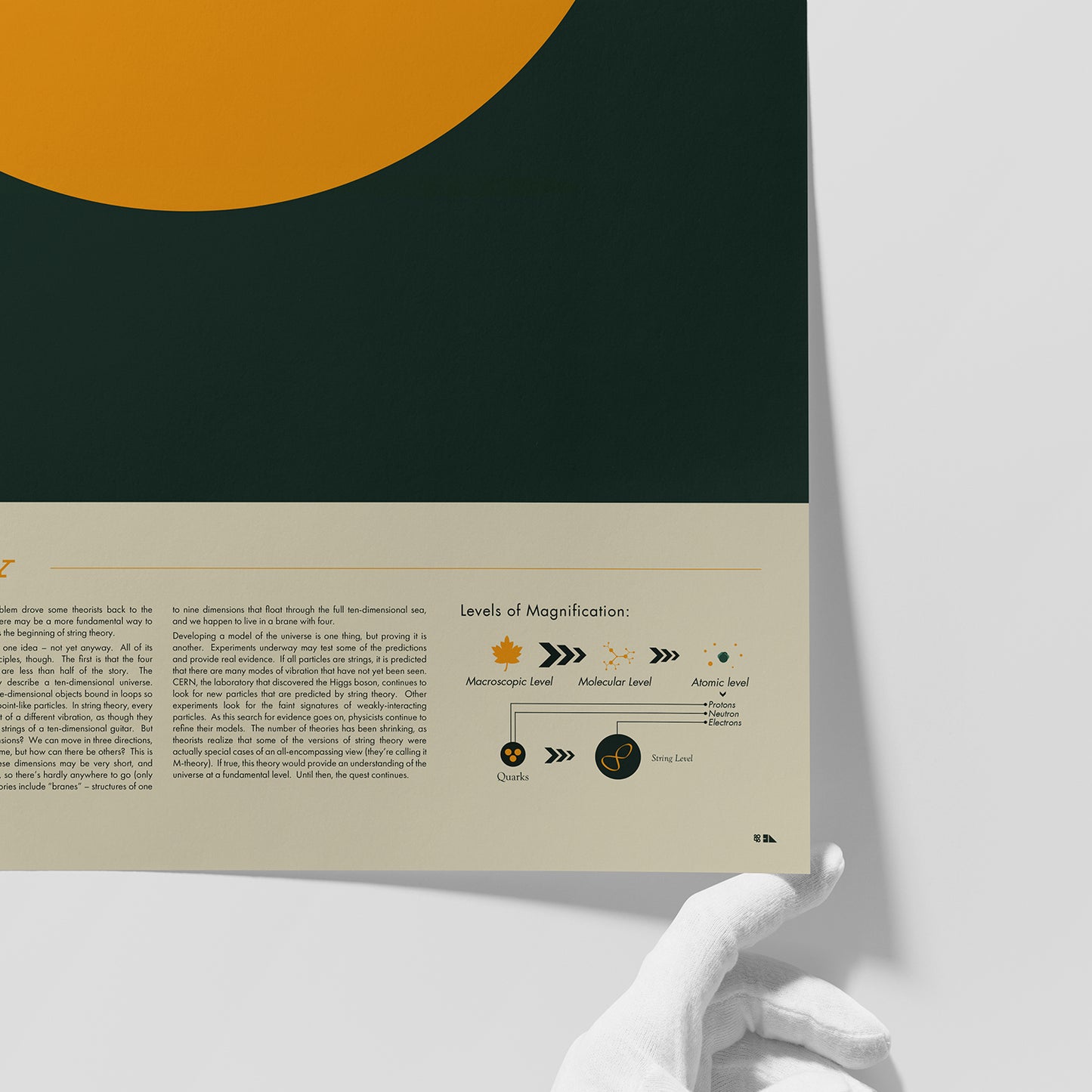


Our custom frames are made in the USA with the highest standards and archival components. All frames are handcrafted, and will protect your artwork for the long haul.
Each frame is uniquely built by a master framing team, and ships right to your door guaranteed to fit and properly preserve your artwork. All the necessary instructions and hardware for mounting and hanging will be included - all you'll need is a hammer and the right wall space.
Please allow 2 weeks for your framed print to ship.

Join us in making sure that everyone (friends, colleagues, family, and perfect strangers) is working to build public support and political will for the big solutions needed to address climate justice.
Pin Save the Climate donates 50% of profits to climate justice organizations.